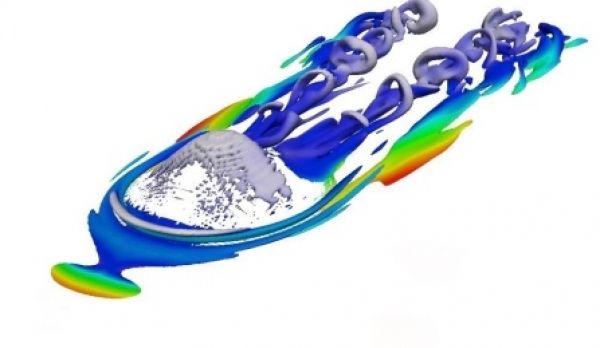If you’ve ever been to an air show, or lived near an air force base, you’re familiar with sonic booms.
These deafening noises are created by aircraft exceeding the speed of sound, roughly 767 mph. They explain, in part, why passenger airliners cruise the skies at slower and less auditorily offensive speeds.
University at Buffalo aerospace engineer James Chen is working to solve problems associated with exceeding the sound barrier.
“Imagine flying from New York City to Los Angeles in an hour. Imagine incredibly fast unmanned aerial vehicles providing more updated and nuanced information about Earth’s atmosphere, which could help us better predict deadly storms,” says Chen, PhD, assistant professor in the Department of Mechanical and Aerospace Engineering at UB’s School of Engineering and Applied Sciences.
Read more at University at Buffalo
Image: The image above is a 3D computer simulation of air flowing over a hill creating turbulence at transonic speed. The ring-like features are eddies of air. Credit: James Chen / University at Buffalo.


